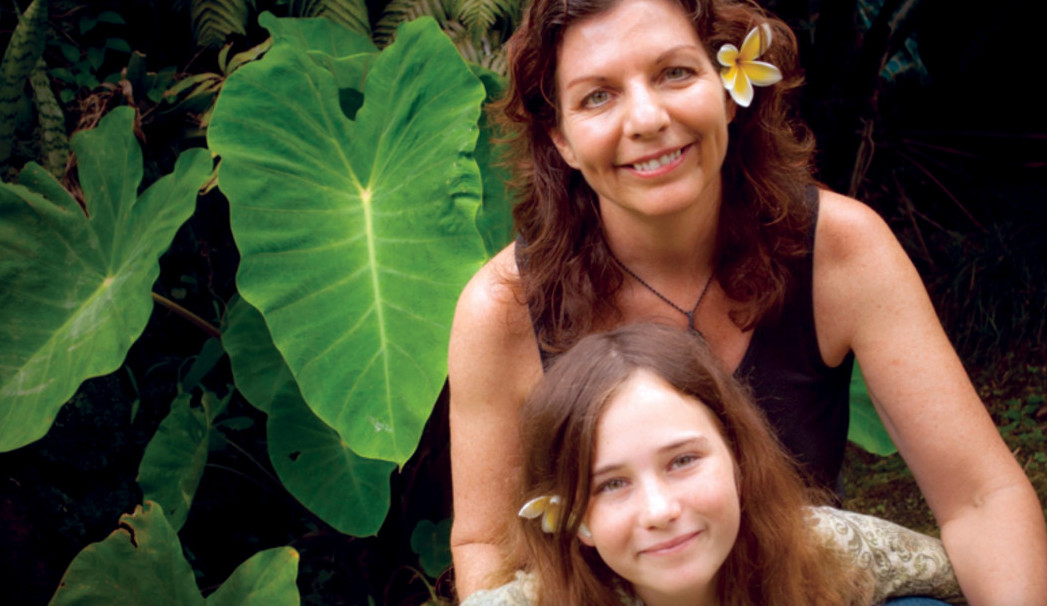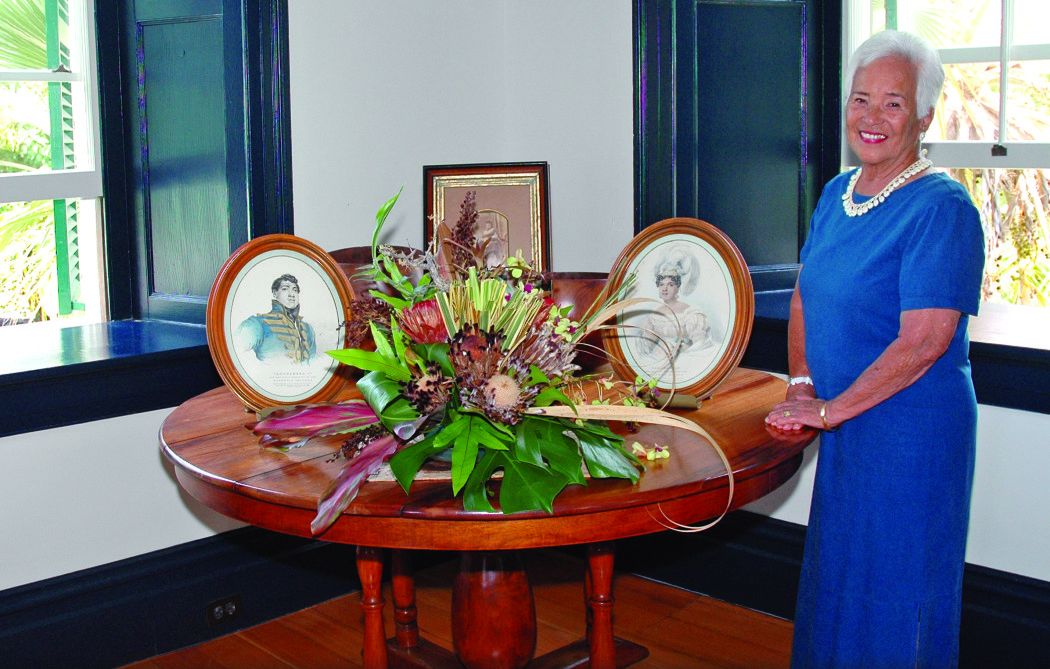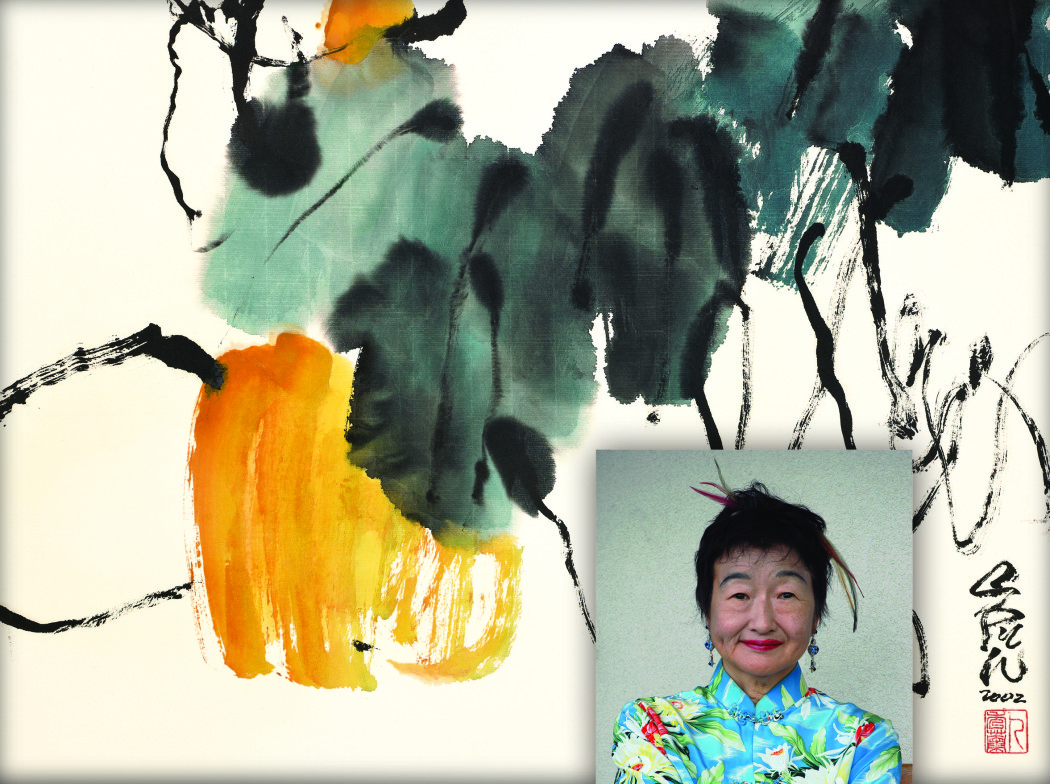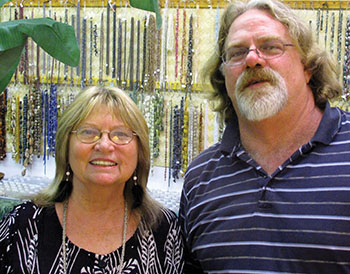
Professing Change
 By Jessica Kirkwood
By Jessica Kirkwood
As humanity faces ecological degradation, increasing social and economic inequality and a growing sense of fear, dissatisfaction and unrest, UH-Hilo Professor Dr. Catherine Becker wants her students to imagine and create a Hawai‘I that is environmentally sustainable, socially just and spiritually uplifting. She is purely their facilitator, their guide.
As an eccentric, honest and holistic intellectual, Catherine Becker has devoted her life to studying the field of communications. With unique vision, some might say “mana,” she has fashioned some contemporary, imperative and transformative upper-division online classes, namely ‘Sustainability, Communication and Culture’.
“I’ve prepared for this class for several years, and so in some ways this course is my opus. It takes into consideration all the things I am passionate about: Hawai’i, social justice, the environment, better ways of communicating and forming relationships, making decisions and solving conflicts. I’ve taught classes about all these different things, and it’s all come together into such a rich bag of materials,” she says.
At the core of Catherine’s vision is her deep belief that efficient human communication offers a path to greater peace and tolerance in the world, and to a better understanding of how to live sustainably. Our current technologies have given us more enriched potential understanding between peoples and cultures, and she realizes that effective, mindful education is the key.
Catherine’s first insights into the importance of global and sustainable thinking came from growing up in the industrial wasteland of Buffalo, New York in the 1960s.
“I played in the shadows of abandoned factories and swam in polluted waters,” she writes to students on her course blog.
Years down the road she would eventually send her own daughter to several alternative schools in the jungles of Hawai‘i, fearing that, otherwise, she could grow up experiencing this same sort of nature-deficit-disorder (and yes, that’s a real disorder) that she had as a child. The summer Catherine turned 19, her craving for more pristine environments led her to hop on the back of a motorcycle and embark on a solo journey across 22 states, covering over 9,000 miles. Her forthcoming book—Moving Between the Lines— is about this particular unfolding.
Catherine received her Doctorate in Communication at the University of Buffalo and completed her Master’s in American Studies. Her dissertation focused on Brazilian Immigrants in Japan, “I was always interested in Japan and saw Hawai’i as a sort of gateway,” she says.
She eventually pursued her graduate studies at Manoa, where she resided for five years. “I loved O‘ahu, but I was shocked to discover such disrespect for the land, like the blasphemies of the Ko’olau Mountains,” she says, “I sought refuge by backpacking in some of the island’s more remote locations and became deeply connected to the natural and spiritual world of the islands.”
Eventually, she leaped head-first into the arms of a charming young Dutchman, and wound up on a plane to Holland, “I went to marry a Dutch doctor and ended up a Spanish soldier in the Portuguese army,” she laughs. And in a way that’s exactly what happened.
“I didn’t end up with the guy but ended up in a role as a Spanish and Arab soldier in a Portuguese play. I even wrote an article about it.”
Upon her return to Buffalo, a deep nostalgia for Hawai‘i and her refuge there set in. Thankfully, while writing her online dissertation, a student credit card ad popped up, advertising a trip to Hawai’i. She applied and ended up at a Sufi camp on Maui. However, it was on a brief hop over to the Big Island that a very vivid vision came to her. She imagined creating a set of cards that would act as a sacred tool for divination, allowing people to discover hidden knowledge about inner and outer worlds, all the while honoring the culture and spirit of aloha.
“I was standing outside at the base of this Tibetan church, and asked Pele for her permission to create the cards,” she goes on, “and then suddenly a giant rainbow appeared in the sky.”
This rainbow would begin appearing throughout her life, almost becoming a visual mantra. And on this particular occasion, she took it as a clear sign of Pele’s approval. Catherine claims that asking permission of the spirits of the land puts her more deeply in touch with understanding her own intentions, while also trusting in her instincts.
A few months later, while attending a communications conference, she found herself at the Double Rainbow Café in Albuquerque. Sitting with a friend, she was explaining to him her continued, almost all-consuming ideas about the creation of Mana Cards, and that her biggest road block was finding an artist. With a break in conversation, her friend got up and made his way to the magazine shelf. Sitting alone, she glanced over to the hibiscus flowers dancing across the shirt of an elderly woman at the next table. Striking up a light conversation, she discovered that the woman, visiting from Maui, was in town teaching a shamanism workshop to a group of social workers. Her friend eventually came back and handed her a magazine. Held within its pages was a brilliantly striking painting of Pele, holding a rainbow in her hands. As fate would have it, the woman at the next table just so happened to be a close friend of the artist.
“She told me that she would put me in contact with the artist, Doya Nardin. I still can’t believe how it all fell together,” she smiles.
The entire creations of Mana Cards took six years to complete. During this time, Catherine would travel back and forth from New York to Bishop Museum in O‘ahu reading ancient transcripts and gathering information to incorporate into the cards. Then she would wait, often meditate on an archetype, and send her ideas to Doya, who would eventually pass her designs and paintings along to Patrick Ka‘ano‘i, an ethnobotanist and author of The Need for Hawai’i. Patrick would examine each card in detail and offer spirited, knowledgeable advice.
The trio believes the spirit world to be a familiar miracle that is manifest in everything around us. They also believe that many of us have disconnected from this truth, but with practice, can regain. Their hope is that these cards can facilitate this re-connection.
“The cards can be used by individuals, couples, and groups to improve communication and foster healthy ways of being, relating and creating culture,” she says.
Since their printing, Mana Cards have become a success in more ways than one. A school in Japan, The Mana Cards Academy,
bases itself around the teachings of the cards, while others
continue to write her letters explaining how the cards have influenced their lives.
To those steeped in rationalism, especially in the academic community, such talk of spirit may touch on ludicrous thought. But Catherine sees spirit and science as one and the same, that to understand one we must understand the other.
During the final printing stages of the cards, Catherine was teaching at the University of Redford in Virginia, where she finally felt she had found her niche. However, a few days before putting a down payment on a house, on a whim she applied for a position as associate professor of Communication at the University of Hawai‘i Hilo, where she would eventually work for nearly a decade.
Like many, Catherine has felt embraced by Pele’s warmth, and she also knows when she is treading on sacred ground. And so, when she was diagnosed with pneumonia in 2007, due to suspected mold allergies and the increased sulfur dioxide emissions from a vent opening at Halemaumau crater, she saw it as a clear sign: that change was of the essence.
Embarking upon a year’s leave, her new focus and support system became Ecovillage at Ithaca, in the beautiful Finger Lakes region of upstate New York. The non-profit educational organization and intentional community is an alternative model for suburban living that greatly minimizes ecological impacts. After nearly a year of living at Ecovillage at Ithaca, during which time many forms of healing took place, she began to envision a rainbow reaching from New York all the way to Hawai‘i. Her pot of gold became the birthing of a new course.
“I really think that Pele kicked me out so that I could learn from others what Hawai‘i needs to sustain its culture, and preserve the land,” she says. And she returned with that wisdom.
Inspired by her time at Ithaca, her online course material incorporates links, videos, articles, podcasts, peer reviews and partnership interactions. Students are invited to calculate their carbon footprint, watch videos on the unsettling effects of military presence and tourism on Hawai‘i, and read excerpts from best-selling environmental authors such as Michael Pollan and Paul Hawkins. She introduces students to the Green Collar Economy movement and alternative energy sources by navigating a myriad of online websites. For a final project, she asks that students go out into their local communities and become the change the world so vitally needs.
“Some students have volunteered at the Kaiao Gardens Boys and Girls Club. Others have aided in the beach clean-up down in Ka’u,” she says. “One of my favorite final projects was a student who started a garden at home. She documented her progress using pictures and journal entries. She wrote that the process even helped her strengthen her bonds with her family members.”
Today, after three years of successfully teaching the course, she admits that online learning has both its benefits and downfalls.
“It’s hard because we don’t get to gauge the non-verbal reactions. There is a spontaneity that emerges from face-to-face discussion,” she admits. “On the other hand, it’s not just me and the students writing and reflecting—we have instantaneous access to the greatest minds on these topics in the world.”
Catherine sees that most of us have been educated in a way that has led us to believe that we are fundamentally selfish, to mistrust the inherent goodness of human beings and to disregard the expansive and uniting quality of sharing emotions. Her course offers space for personal reflection as she encourages students to read their peer’s writings from a place of empathy and compassion. She believes that communities practicing loving kindness and mindful living may be the most important thing humans can do for the survival of our species and the planet.
And to Catherine, it’s not about making the world one type of culture; this would mean doing away with the many cultures and many ways of maintaining relationships with each other and with nature. Rather, it’s about drawing together all the traditions of the planet and creating societies that respect diversity. Her course takes students on a journey with the first step being to confront the daunting reality of our current global crisis. The journey continues and offers powerful insights into how we came to be where we are today and what changes we need to make for our survival. She conveys just how much our inactions play a part in shaping our world as our actions do. By the end, her students are filled with hope in seeing that global peace is a very achievable possibility.
Teaching students who are located on-island and as far off as East Timor, San Francisco and Tonga, what she’s learned is that every single person is onboard.
“Each student is committed to Hawai‘i and wants to make it available to future generations just as much as I do,” she says. “Their generation is the one that needs to emerge the efforts in this movement and come to us, the people who have been around longer, for guidance and advice.”
Catherine’s philosophies encourage us to keep an open mind and an open heart, set the intention to heal, draw upon ancient knowledge, lead by example, and perhaps most of all, experience the true meaning of aloha ‘aina – which assures us that the earth cares for us as much as we care for her.
Contact writer Jessica Kirkwood at jkirkwood23@hotmail.com.
For more information: www.manacards.com


